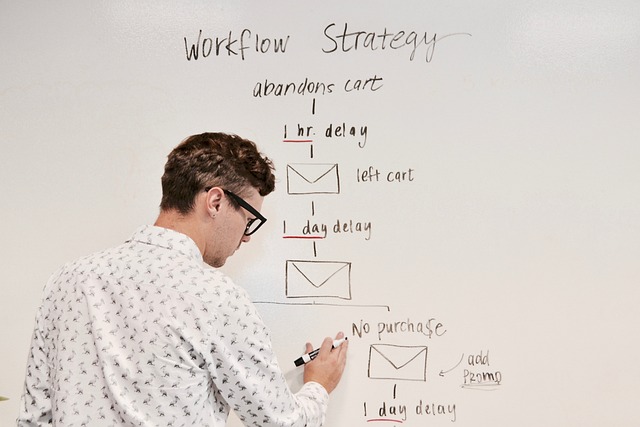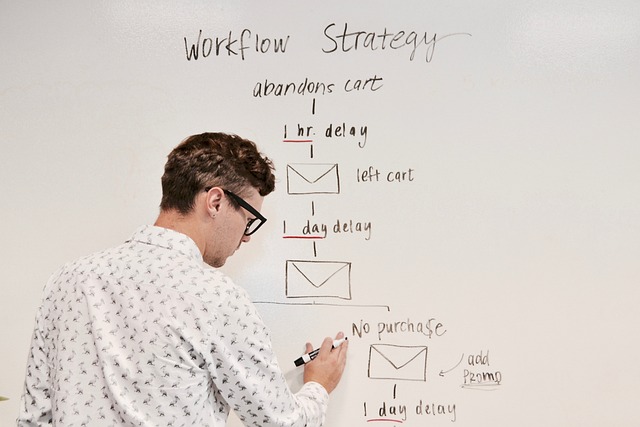Welcome to the ultimate guide to email campaign management: your roadmap to achieving success in the digital marketing world.
Just like a skilled conductor leading a symphony, you have the power to orchestrate a harmonious and impactful email campaign that resonates with your audience.
In this guide, we will equip you with the essential tips and tricks to navigate the complexities of email campaign management. Think of it as your compass, guiding you towards achieving your goals and objectives with precision and finesse.
Building a targeted email list is akin to assembling a group of avid listeners who eagerly anticipate your every note. Crafting compelling and personalized content allows you to strike a chord with each individual, forging a deep connection.
Designing effective email templates ensures your message is delivered with clarity and style, leaving a lasting impression. Testing and optimizing your campaigns allows you to fine-tune your performance, like a virtuoso perfecting their technique.
Finally, monitoring and analyzing your campaign’s performance provides valuable insights, enabling you to make data-driven decisions and elevate your future campaigns to new heights.
So, grab your baton and get ready to conduct an email campaign that will captivate, engage, and inspire your audience. Let’s dive in and unlock the secrets to email campaign management success.
Key Takeaways
- Define clear goals and objectives for your email campaign
- Segment your email list to send relevant and personalized content
- Utilize data-driven insights to tailor your messaging and optimize templates
- Continuously track and analyze email campaign performance to make data-driven decisions and improve your email marketing efforts.
Define Your Campaign Goals and Objectives
Before diving into your email campaign, take a moment to define your goals and objectives, so you can create a powerful and impactful strategy that will leave your audience craving more. Setting measurable metrics is essential to track the success of your email campaign.
Determine what specific actions you want your audience to take, such as making a purchase, downloading a resource, or signing up for an event. Once you have clear goals in mind, you can create engaging subject lines that will grab your subscribers’ attention and entice them to open your emails. A compelling subject line is the first step towards getting your message across.
Now that you have defined your campaign goals and objectives and crafted attention-grabbing subject lines, it’s time to build a targeted email list.
Build a Targeted Email List
To truly hit the mark with your email campaigns, it’s like crafting a splendid symphony – you must build a targeted email list that harmonizes with your audience’s needs and desires.
One of the key elements of building a successful email list is email segmentation. By dividing your subscribers into different groups based on their interests, demographics, or past interactions with your brand, you can send more relevant and personalized content that resonates with each segment.
This not only increases the chances of engagement but also improves email deliverability, as you’re sending emails to people who are genuinely interested in your content.
When you have a well-segmented email list, you can then proceed to create compelling and personalized content that’ll captivate your audience and drive them to take action.
Create Compelling and Personalized Content
Craft compelling and personalized content that speaks directly to your audience’s needs and desires, igniting their passion and inspiring them to take immediate action. By implementing effective email personalization techniques and content segmentation strategies, you can ensure that each email resonates with your subscribers on a deeper level.
To create truly compelling content, first understand your audience’s preferences and tailor your messaging accordingly. Use data-driven insights to segment your email list based on demographics, behavior, and preferences. This will allow you to deliver content that is highly relevant and personalized to each individual subscriber.
Additionally, consider incorporating a 3 column and 5 row table into your emails to present information in a visually appealing and easily digestible format. This will help grab your audience’s attention and keep them engaged with your content.
In the next section, we will discuss how to design effective email templates that complement your compelling content and drive conversions.
Design Effective Email Templates
Designing effective email templates is crucial for capturing your audience’s attention and maximizing conversions. This can be achieved by creating visually appealing and impactful messages. To achieve this, it is important to focus on responsive design. Ensure that your templates are mobile-friendly and can be easily viewed on different devices. A responsive design will not only enhance the user experience but also improve your email deliverability and open rates.
In addition, utilize A/B testing to optimize your email templates. Test different variations of your templates to identify what resonates best with your audience. Experiment with different subject lines, layouts, colors, and calls-to-action. A/B testing allows you to gather valuable insights and make data-driven decisions to improve the performance of your email campaigns.
By designing effective email templates with responsive design and utilizing A/B testing, you can create engaging emails that drive conversions. Now, let’s dive into how to test and optimize your campaigns to further enhance your email marketing success.
Test and Optimize Your Campaigns
Make your email campaigns stand out by testing and optimizing them for maximum impact. A/B testing is a powerful tool that allows you to compare different versions of your email to determine which one performs better. By testing elements such as subject lines, call-to-action buttons, and email layouts, you can identify what resonates best with your audience and drive higher engagement. Additionally, email segmentation is another essential strategy for optimizing your campaigns. By dividing your email list into smaller, more targeted segments based on demographics, interests, or past behavior, you can deliver more personalized and relevant content to each recipient. This not only increases the chances of conversion but also helps build stronger relationships with your subscribers. In the table below, you can see the potential impact of A/B testing and email segmentation on your email campaign performance:
| A/B Testing | Email Segmentation |
|---|---|
| Increased open rates | Higher click-through rates |
| Improved subject lines | More relevant content |
| Enhanced email design | Better customer segmentation |
| Optimized call-to-action | Increased customer loyalty |
By implementing A/B testing and email segmentation in your email campaigns, you can significantly improve your overall results. In the next section, we will discuss how to monitor and analyze your email campaign performance to further enhance your strategies.
Monitor and Analyze Your Email Campaign Performance
Track and analyze the performance of your email campaigns to gain insights and improve your strategies.
Email analytics and campaign tracking play a crucial role in measuring the success of your email campaigns. By monitoring key metrics such as open rates, click-through rates, and conversion rates, you can identify what is working and what needs improvement.
Email analytics tools provide valuable data that helps you understand your audience’s behavior and preferences. With this information, you can make data-driven decisions to optimize your campaigns, such as adjusting your subject lines, testing different call-to-action buttons, or segmenting your audience.
Regularly reviewing and analyzing your email campaign performance allows you to make informed decisions and continuously improve your email marketing efforts. Don’t underestimate the power of tracking and analyzing your email campaigns – it’s the key to achieving success.
Frequently Asked Questions
How can I ensure that my email campaign aligns with my overall marketing goals?
To ensure your email campaign aligns with your marketing goals, start by clearly defining those goals.
Identify the key metrics you want to track and measure the success of your campaign.
Tailor your content, design, and messaging to resonate with your target audience.
Optimize your email strategy by segmenting your audience and personalizing your messages.
Continuously analyze and iterate based on the data you collect to maximize campaign effectiveness and achieve your marketing objectives.
What are some strategies for growing and maintaining a high-quality email list?
Want to build a high-quality email list that drives results? Think of it like cultivating a beautiful garden.
To start, create an effective opt-in strategy by offering something of value in exchange for email addresses. Then, use segmentation to tailor your campaigns to specific groups, increasing engagement and conversions.
By focusing on quality over quantity, you’ll ensure your emails reach the right people, leading to a more successful email campaign.
So, get gardening and watch your email list bloom!
How can I personalize my email content to increase engagement and conversions?
To increase engagement and conversions, personalize your email content using effective personalization strategies and conversion optimization tactics.nnTailor your content to each recipient’s preferences, interests, and purchase history.nnUse dynamic content to show relevant product recommendations or personalized offers.nnImplement personalized subject lines and preheader text to grab attention.nnSegment your email list based on demographics, behaviors, or past interactions.nnTest and analyze the performance of your personalized emails to continuously improve your conversion rates.
Are there any best practices for designing visually appealing and responsive email templates?
When designing visually appealing and responsive email templates, it’s important to stay on top of design trends.
For instance, keeping your email templates simple and clean can have a big impact on engagement.
Mobile optimization is also crucial, as more and more people are accessing emails on their phones. Make sure your templates adjust seamlessly to different screen sizes for a seamless user experience.
By following these best practices, you can create email templates that are not only visually appealing but also drive higher conversions.
What are some key metrics and analytics that I should be monitoring to gauge the success of my email campaigns?
To gauge the success of your email campaigns, monitor key metrics like open rates and conversion rates.
Open rates show how many recipients actually opened your emails, indicating their interest.
Conversion rates measure the number of recipients who took the desired action, such as making a purchase or signing up for a newsletter.
By tracking these metrics, you can assess the effectiveness of your campaigns and make data-driven decisions to improve your email marketing strategy.
Conclusion
So there you have it, the ultimate guide to email campaign management! With these tips and tricks, you can take your campaigns to new heights of success.
Define your goals, build a targeted list, and create compelling content that speaks directly to your audience.
Design effective templates that catch the eye and test them to perfection.
And don’t forget to monitor and analyze your campaign’s performance to make data-driven decisions.
Just like a well-oiled machine, your email campaigns will be unstoppable, captivating your audience like a mesmerizing sunset.
Start implementing these strategies today and watch your success soar!








